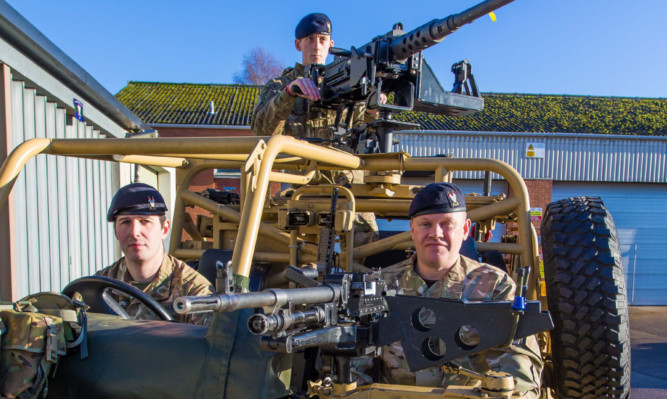Army reservists based at Yeomanry House in Cupar will formally become members of a new regiment at a ceremony in Edinburgh Castle on Thursday night.
The Scottish and North Irish Yeomanry (SNIY) is a new creation, created out of the restructuring of the Yeomanry regiments.
It is one of the army’s reserve light cavalry regiments (Lt Cav Regt) carrying out combat reconnaissance. The regiment has squadrons in Cupar, Ayr, Belfast and Edinburgh.
It encompasses what was the Fife & Forfar Yeomanry/Scottish Horse (FFY/SH) which was a Yeomanry Squadron of the Queen’s Own Yeomanry.
The regiment has been paired with the Royal Scots Dragoon Guards due to arrive at RAF Leuchars next year in a light cavalry role under the army’s Strategic Defence and Security Review (SDSR) 2020. They will be primarily equipped with the WMIK Land Rover.
The Scottish and North Irish Yeomanry (SNIY) is the only new cap-badge to have been created as part of the ongoing re-structuring of the army.
Major Blair Smart, the Cupar-based officer commanding C(FFY/SH) Squadron of the Scottish and North Irish Yeomanry, told The Courier the wolf had been selected as the cap badge as it is noted in both Scottish and Irish folklore for warning, guiding and protecting locals and travellers, epitomising the Light Cavalry role.
Major Smart, who spent decades as a regular soldier with the Royal Artillery and Royal Armoured Corps (RAC) units, said: “The history and identity of the regiment is very important. Most of our recruits come from the Fife and Dundee areas. Retaining links with the local area is massive for us.”
